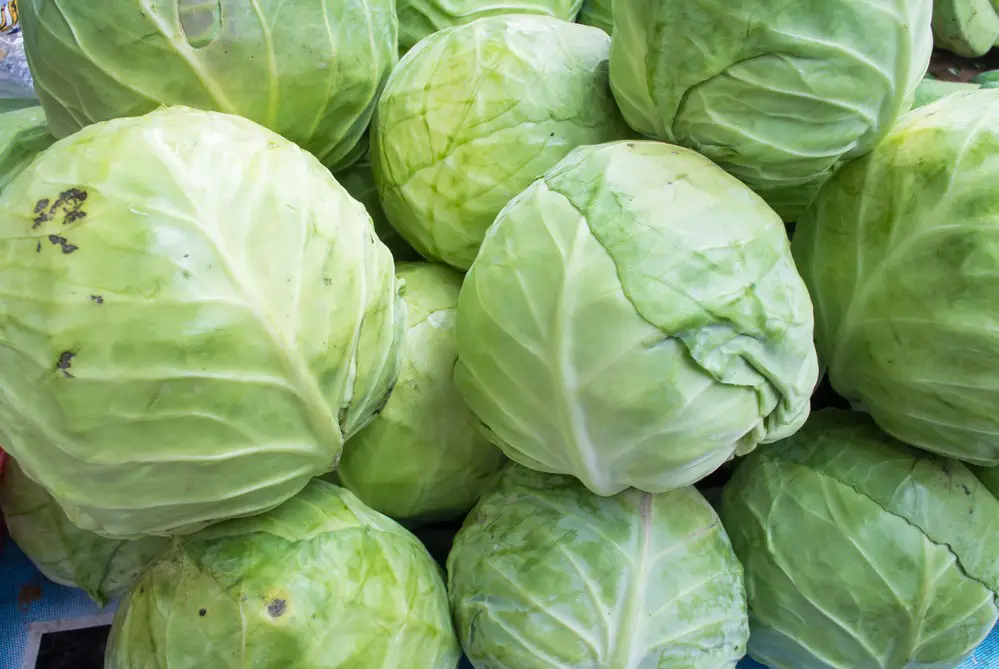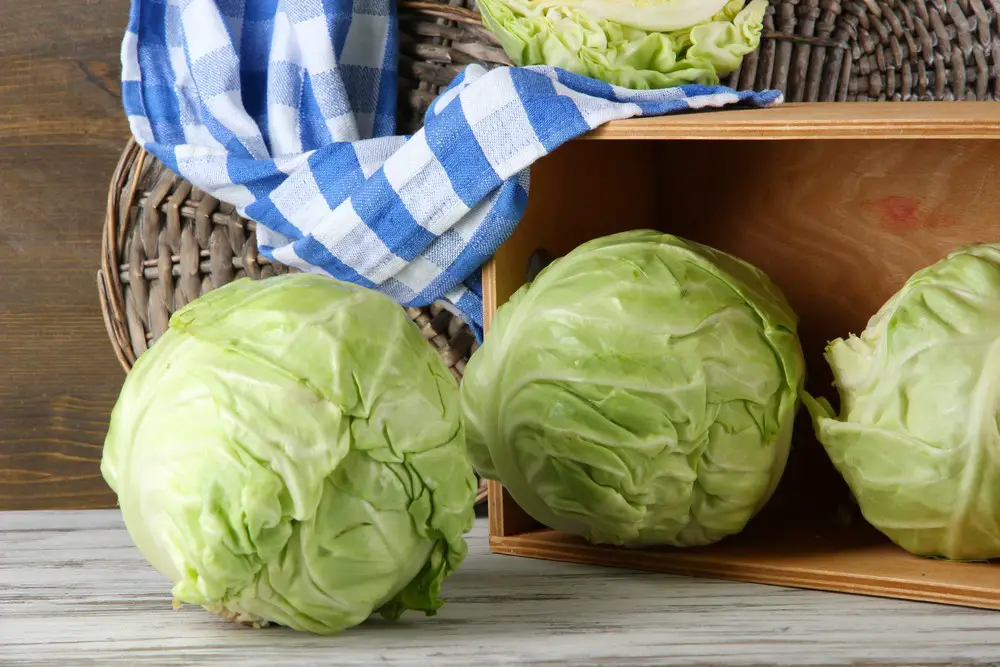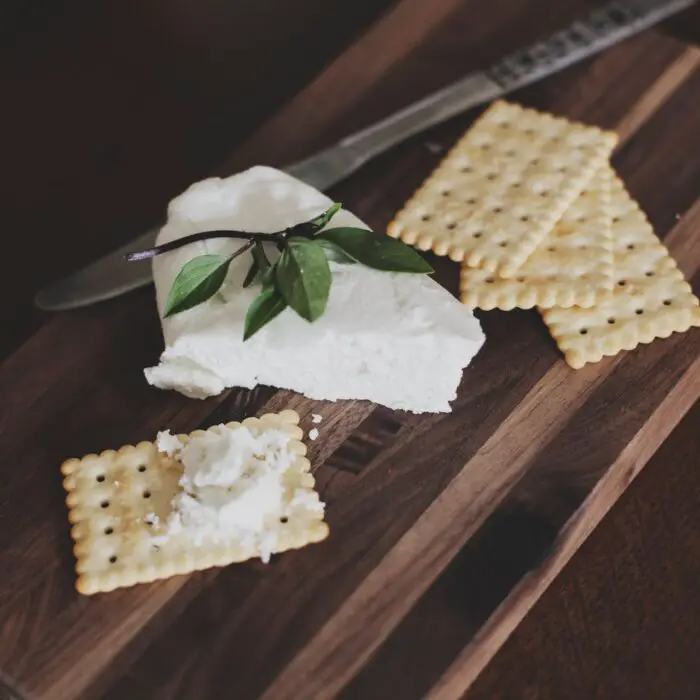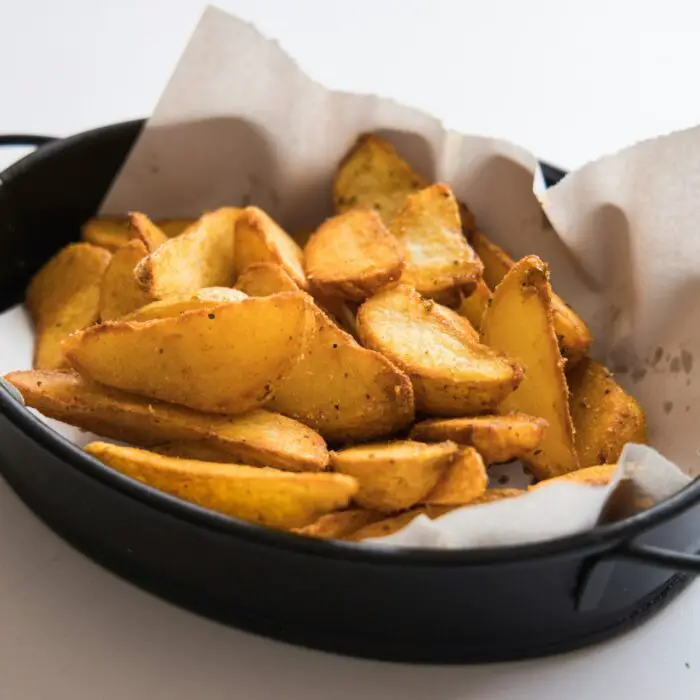Determining whether cabbage is bad may not be immediately apparent, but there are clear signs to look out for that signal when it’s time to discard this leafy green. As a staple in many kitchens, cabbage is valued for its versatility and longevity, but like all fresh produce, it has a finite shelf life. One of the first indicators of cabbage going bad is its appearance. Fresh cabbage should have crisp, tightly packed leaves rich in color without dark or black spots.
If you’re inspecting your cabbage and notice an unpleasant odor, this strongly indicates that it has spoiled. A healthy cabbage should not emit a strong smell; if it does, it may result from bacterial or fungal growth, which occurs when the cabbage starts decomposing. Another aspect to be mindful of is texture. When cabbage begins to spoil, its leaves may lose their firmness, becoming limp or slimy, which is a sure sign that it’s past its prime.
Understanding how to store cabbage properly can also extend its shelf life and preserve its quality. Keeping cabbage cold in the refrigerator, ideally in a crisper drawer, can help maintain its freshness. Always keep it unwashed and wrapped in plastic until you’re ready to use it, as this protects it from moisture and the growth of microorganisms.
Key Takeaways
- Inspect the appearance and smell of cabbage to judge its freshness.
- Feel the texture of the cabbage leaves; they should be crisp, not limp or slimy.
- Store cabbage in the refrigerator and keep it wrapped to prolong its shelf life.

Identifying Fresh Cabbage
Selecting fresh cabbage is key to the quality of your dishes. Look for heavy cabbage heads for their size; this indicates they’re well-hydrated and packed with crisp leaves. You’ll feel the firmness as you give them a little squeeze.
Freshness shows in the leaves themselves:
- Color: You want a vibrant hue, be it the deep purples of red cabbage, the rich greens typical of green cabbage, or the pale tones of napa cabbage and savoy cabbage. The color should look lively, not dull.
- Texture: Crisp leaves are your friend. They should snap rather than bend when you pull them. Any sign of wilting or browning, and the cabbage is past its prime.
- Leaf Integrity: Look for tightly packed leaves with no significant cracks or insect holes. Minor blemishes on the outer leaves aren’t a dealbreaker—those can be removed—but the inner leaves should be pristine.
When inspecting, don’t forget the bottom of the cabbage where the stem is:
- Cabbage Stem: A fresh cabbage will have a healthy-looking stem, firm and not dried out. If it looks brown or dried, it’s likely been sitting out too long.
Key takeaway: Trust your senses. Fresh cabbage will feel dense and firm, have crisp leaves, and flaunt a vibrant color, whether it’s green, purple, or pale. When in doubt, go for the lush and solid cabbage.

Signs of Spoiled Cabbage
When you’re rummaging through your fridge, wondering if that head of cabbage is still good, here’s what to keep an eye on:
- Discoloration: If you notice your cabbage leaves turning brown or black, it’s a sign that spoilage is taking place. Discolored leaves often indicate that your cabbage is past its prime.
- Odor: Should your cabbage emit a strong, unpleasant smell, it’s telling you that something’s not right. A healthy cabbage should have a fresh, slightly earthy smell, not sour or off-putting.
- Sliminess: Feeling a slippery texture on the cabbage’s surface? A slimy feel is a major red flag. This indicates bacterial growth, and the cabbage should not be consumed.
- Mushy Texture: Cabbage is known for its crispness. If the leaves have lost their firmness and become mushy, it’s a telltale sign that your cabbage has gone bad.
- Black Spots or Mold: Keep your eyes peeled for black spots or any mold growth. These are clear indicators that the cabbage should be discarded right away.
- Spotting: Minor spotting might not always mean the cabbage is spoiled, but extensive spotting suggests that decay is setting in.
Remember, it’s better to err on caution and toss it out when in doubt. Your health is paramount, and spoiled food can lead to foodborne illnesses. Trust your senses – they’re your best tools for identifying whether your cabbage is enjoyable.
Assessing Cabbage Shelf Life
Understanding the shelf life of cabbage, from the moment you purchase it until it’s time to use it, is crucial for maintaining freshness and taste.
From Purchase to Storage
When you bring your cabbage home, storing it properly to maximize its shelf life is essential. If you immediately place your cabbage in the refrigerator, it can last anywhere from 1 to 2 weeks. Here’s what you should do:
- Store it in a cool, dark place within your fridge, preferably in the crisper drawer.
- Keep the cabbage in a plastic bag to retain moisture. Make sure it’s not airtight to allow a little airflow.
Key takeaway: A fridge set at a cold temperature extends cabbage’s freshness.
After Opening
Once you’ve cut into your cabbage, the clock starts ticking faster on its freshness. Here’s how to handle leftover cabbage:
- Wrap the leftover cabbage in plastic wrap or place it in an airtight container before returning it to the fridge.
- Use leftover cabbage within 3 to 5 days for the best quality.
Key takeaway: Properly storing cut cabbage in the fridge maintains its quality for a few more days.
Proper Cabbage Storage Techniques
Storing your cabbage correctly can make a big difference, buddy. Not only will good storage practices keep your cabbage fresh and crisp, but they’ll also help it retain its nutrients. Here’s how you can ace cabbage storage:
- Keep it cool: Your fridge is the ideal spot for cabbage. It loves the cold and stays happy at temperatures just above freezing. Aim to keep your fridge’s temperature steady and cool.
- Crisper drawer is your friend: Slide your cabbage into the crisper drawer of your refrigerator. This special spot is designed to maintain an ideal environment with just the right humidity level.
- Wrap it up: Moisture can be a foe to freshness. If it’s not already in a plastic bag, wrap your cabbage in one to keep excess moisture out. But here’s the catch — don’t seal it airtight. Your cabbage needs to breathe a little, so leave the bag loose or poke a few holes in it.
- Dry as a bone: Make sure the leaves are nice and dry before storing. Any extra water hanging around could encourage spoilage. Just give it a gentle shake or pat down with a paper towel.
If you’re in it for the long haul and have a cool, dark place like a root cellar, that’s also an excellent option for whole heads of cabbage. Remember, the key is to keep them dry and cool, slowing down the aging process.
Key Takeaway: To keep your cabbage at its best, stow it in the crisper drawer of a cool fridge, snug in a perforated plastic bag. Keep it dry to ward off spoilage.
Cabbage Freshness and Quality
Checking the quality and freshness of cabbage is essential to ensure you get the best taste and texture from your veggies. Here’s a quick guide to help you select the freshest cabbage at the store or assess if it’s still good in your fridge.
Texture: Fresh cabbage should have a firm texture. It should feel dense and hardy when you give it a gentle squeeze. If the leaves feel soft or you can easily squeeze the cabbage, it’s likely past its prime.
Vibrant Color: Look for cabbages that have a vibrant color. Depending on the variety, healthy cabbages usually showcase a bright green or purple. Dull or yellowing leaves are a warning sign that the cabbage is old or hasn’t been stored properly.
Odor: Fresh cabbage should have a slightly sweet, earthy smell. An off or sulfur-like odor is a clear indicator that the cabbage is no longer edible.
Crisp Leaves: The outer leaves should be crisp and tightly attached to the head. If they are floppy or detached, consider choosing another head.
Taste Test: If you’re still unsure and can taste, look for a crisp texture and a slightly peppery flavor, characteristic of fresh cabbage.
Key Takeaway: When selecting cabbage, trust your senses. Fresh cabbage will be firm, crisp, and have a pleasant, sweet smell. Avoid any heads with soft spots or unpleasant odors. Remember, an uncut head of cabbage typically lasts longer and retains its freshness better than pre-cut or shredded varieties. If it looks vibrant and feels right, you’re on track for a delicious addition to your meal!
Dealing with Cabbage Decay
It’s crucial to recognize signs of decay, such as mold and rot when dealing with cabbage to maintain your health and kitchen hygiene.
Mold and Fungus
Mold on cabbage often appears as fuzzy or slimy spots with various colors, from green to black. Here’s what you need to keep an eye out for:
- Visual Signs: Look for fuzzy, green, white, or black spots that may indicate mold growth.
- Texture: Mold could be present if your cabbage feels mushy or slimy.
To deal with mold:
- Immediate Action: Remove and discard affected leaves immediately to prevent the spread to other veggies.
- Be Safe: If the mold has spread significantly, tossing the whole head to avoid health risks is best.
Key takeaway: Toss any cabbage with visible mold to prevent bacteria and fungus-induced ailments.
Rot and Blemishes
Rot and imperfections in cabbage signal its deterioration. Here’s how to spot these issues:
- Rot: This usually makes the cabbage soft and mushy, possibly giving off an unpleasant, foul smell.
- Blemishes: Dark spots or areas that seem dried out and shriveled.
Addressing rot and blemishes:
- Assess the Damage: Small blemishes can be cut away. However, if a large portion is affected or the cabbage has an off smell, it’s time to say goodbye.
- Compost Wisely: You can compost affected parts if they’re only slightly bad, but avoid composting heavily deteriorated cabbage as it can introduce pathogens.
Key takeaway: Salvage what you can by cutting away slight imperfections, and compost the rest if it’s not too far gone.
Handling and Washing Cabbage
Before enjoying your fresh cabbage, ensure it’s clean and safe. Start by discarding any outer leaves that seem wilted or damaged. Remember, a good cabbage has firm, densely packed leaves with a vibrant color. Handling your cabbage carefully preserves its water content and the crisp texture you love.
When you’re ready to wash, here’s a step-by-step guide:
- Use cold water: Cold water is ideal for washing fresh produce. It helps maintain the crispness of the cabbage without altering its natural state.
- Gentle agitation: Submerge the cabbage in a large basin of cold water and swirl it around gently. This action loosens any dirt or potential critters hiding in the leaves.
It’s a balancing act: Avoid soaking the cabbage for too long, as it can lead to excess moisture, affecting its texture and flavor.
After washing, it’s crucial to dry your cabbage properly:
- Pat dry: With a clean towel, pat the cabbage dry to remove excess water.
- Air dry: If you have time, let it dry briefly. This step ensures there’s no extra moisture that can hasten spoilage.
Remember that washing your cabbage removes dirt and addresses health and safety by reducing the presence of bacteria. However, refrain from over-washing, which might strip away some natural flavors and nutrients.
Key takeaway: A thoroughly but gently washed cabbage, with just the right amount of moisture, ensures peak crispness and readiness for your favorite dishes.
Cabbage in the Cooking Process
When you’re cooking cabbage, whether fresh or leftover, there are a few essential tricks to remember to ensure your dish turns out delicious and safe to eat.
Cooking Fresh Cabbage
Cooking fresh cabbage starts with selecting the suitable leaves. Please make sure they’re crisp and free from dark spots. Here’s what to do:
- Wash it properly: Before cooking fresh cabbage, rinse it well under cold running water.
- Blanching: To retain Vitamin C and soften the leaves, blanch them by immersing them in boiling water for a few minutes and then transferring them to ice water.
- Stir-frying: To stir-fry, cut the cabbage into thin strips for quick and easy cooking.
Tips for success:
- Don’t overcook fresh cabbage; it should still have a bit of crunch to preserve the texture and nutrients.
- By keeping the cooking time short, you’ll retain most of the Vitamin C, as it’s quite sensitive to heat.
Key takeaway: For the best texture and nutrition, cook fresh cabbage quickly and be mindful of its delicate vitamins.
Using Leftover Cabbage
If you’ve got cooked cabbage leftovers, they can still play a star role in your meals. Be cautious about food safety and enjoy your cabbage in different ways:
- Reheat carefully: Warm leftover cabbage in a preheated oven or stovetop until hot.
- Freeze if necessary: Did you cook too much? Freeze leftovers in airtight containers after cooling to use in future meals.
Remember:
- Always sniff and inspect your leftover cabbage before using it; if it smells or is discolored, it is better to play it safe and throw it away.
- When frozen, cooked cabbage can last for months, but the texture may change once thawed; it’s still perfect for soups or stews.
Key takeaway: Leftover cabbage is versatile and can be safely enjoyed or frozen for later if it passes a quality check first.

Preventing Cabbage Spoilage
When it comes to cabbage, keeping it fresh is vital in preventing spoilage. A few simple steps can help you enjoy your cabbage for longer!
Store it right: Place your cabbage in an airtight container or a sealed plastic bag to protect it from moisture and outside odors. This barrier guards against spoilage by keeping excess air out.
- Keep it cool: The fridge is your cabbage’s best friend. Cold temperatures slow down the decay process, so stash your cabbage in the crisper drawer of your refrigerator.
- Dry is good: Before storing, make sure your cabbage is dry. Any extra water can encourage spoilage, so a gentle pat with a towel does wonders.
Freezing is an option: If you’ve got more cabbage than you can use in the short term, consider freezing it. Here’s how to do it properly:
- Wash and chop the cabbage.
- Blanch it in boiling water for about 90 seconds.
- Plunge it into cold water to stop the cooking.
- Drain well and pat dry.
- Place the cabbage in airtight containers or freezer bags before popping it into the freezer.
This method works best for dishes where the cabbage is cooked because freezing can change the texture. By freezing, you lock in freshness and halt spoilage right in its tracks.
Key takeaway: Remember to keep your cabbage dry, cool, and in an airtight space to maintain its low water content and prevent spoilage. These habits can help your cabbage stay crisp and tasty for much longer than you might expect!
 Cabbage and Food Safety Concerns
Cabbage and Food Safety Concerns
When it comes to cabbage, knowing how to spot the bad ones is key to ensuring your meals are both delicious and safe. Compromised cabbage can lead to various foodborne illnesses, so keep your eyes peeled for these signs.
Visual Cues:
- Slimy leaves: If the cabbage leaves feel slimy, it’s a no-go.
- Discoloration: Dark spots or brown patches are indicators that your cabbage is past its prime.
Smell and Texture:
- A fresh cabbage should smell like…well, a cabbage! If you get a whiff of something sour or off-putting, trust your nose and toss it.
- Cabbage should be firm to the touch. If it’s soft or under pressure, that’s your cue to say goodbye.
Health Risks:
Eating spoiled cabbage can invite unwanted guests like Salmonella and E. coli into your system. These bacteria can cause severe discomfort—or worse, health issues. So, it’s crucial to err on the side of caution.
Cleanliness Tips:
- Always wash your cabbages thoroughly under running water.
- Don’t just clean the cabbage—ensure your cutting boards and utensils are spotless, too.
Storage Smarts:
Store your cabbage in the coldest part of your fridge. Not only does this keep the cabbage fresh for longer, but it also keeps bacteria’s love for warmth at bay. Remember, food safety starts with proper storage!
Key Takeaway: If something seems amiss with your cabbage—slimy, discolored, or smells funky—it’s better to be safe and dispose of it. Your health isn’t worth the risk. Keep everything clean, and enjoy your fresh cabbage with peace of mind!
Cabbage Varieties and Uses
Cabbages come in various colors and shapes, each with unique flavor and culinary uses.
- Green Cabbage: This is the most common variety, known for its pale green, firm leaves. It’s incredibly versatile. Slice it up for a simple side salad, or cook it for a hearty stew.
- Red Cabbage: With its vibrant color, red cabbage is an eye-catcher. It’s slightly peppery and perfect for adding a crunch to salads. When cooked, it turns blue-ish, so add a touch of vinegar to maintain its color.
- Purple Cabbage: Similar to red cabbage, this variety makes for an excellent visual and taste addition to dishes. It’s full of healthy antioxidants.
When it comes to fermenting cabbages, here’s how you can transform them:
- Sauerkraut: Traditionally made from green cabbage, sauerkraut is finely cut, salted, and then fermented. It’s zesty and can be a delicious topping for sausages.
- Kimchi: This Korean staple primarily uses napa cabbage with softer, frilly leaves. Kimchi combines spice, savory, and a hint of sweetness.
Exploring the less common but equally tasty varieties:
- Napa Cabbage: It’s oblong with crinkly leaves and a milder flavor. You’ll enjoy it in Asian-style soups or stir-fries.
- Savoy Cabbage: With its ruffled, lacy leaves, savoy cabbage is tender and mild, perfect for wrapping fillings or a comfy casserole.
Key Takeaway: Each cabbage type offers a unique texture and taste, making them suitable for various dishes, from fresh salads to fermented delights. Mix and match them in your recipes for colorful and health-boosting meals!
Frequently Asked Questions
When it comes to cabbage, freshness is vital for both taste and health. Below, you’ll find common queries to help you ensure your cabbage is of the best quality and safe to consume.
What are the signs that cabbage has spoiled?
If you’re wrestling with your cabbage’s condition, look for discolored leaves, an off-putting smell, or a slimy texture. These are clear red flags. Remember, if in doubt, toss it out!
Can you still use cabbage that has developed black spots?
Black spots may mean your cabbage has started to spoil, but sometimes they’re just surface blemishes. If the spots are superficial, you can cut them away. Just ensure that the rest of the cabbage looks and smells fresh. A little cosmetic flaw doesn’t always spoil the bunch.
What is the safe duration to keep cabbage at room temperature?
You might not think twice about leaving your cabbage on the counter, but it can only sit safely for about two hours. After that, bacteria can start to party, and it’s not the kind you want at your dinner table.
How should you store partially used cabbage to maintain its freshness?
Keeping your cabbage crisp and ready for its next debut calls for some TLC. Wrap it tightly in plastic wrap and stash it in the crisper drawer of your fridge. This snug spot helps it stay fresh and flavorful longer.
For how long is cooked cabbage good when stored in the refrigerator?
After a delicious meal, you’ll want to pack away any cooked cabbage neatly in a sealed container. It’s a game of tick-tock, with a countdown of 3-5 days max in the fridge. Mark your calendar, so you don’t forget it!
Why does shredded cabbage turn brown and is it still safe to eat?
Ever notice your shredded cabbage getting a tan? That’s oxidation, a natural reaction to air exposure. It’s like when an apple gets a bit brown, and your cabbage is still safe to munch on if this change is recent. Give it the eye and nose test first, as your senses are your best kitchen buddies.







